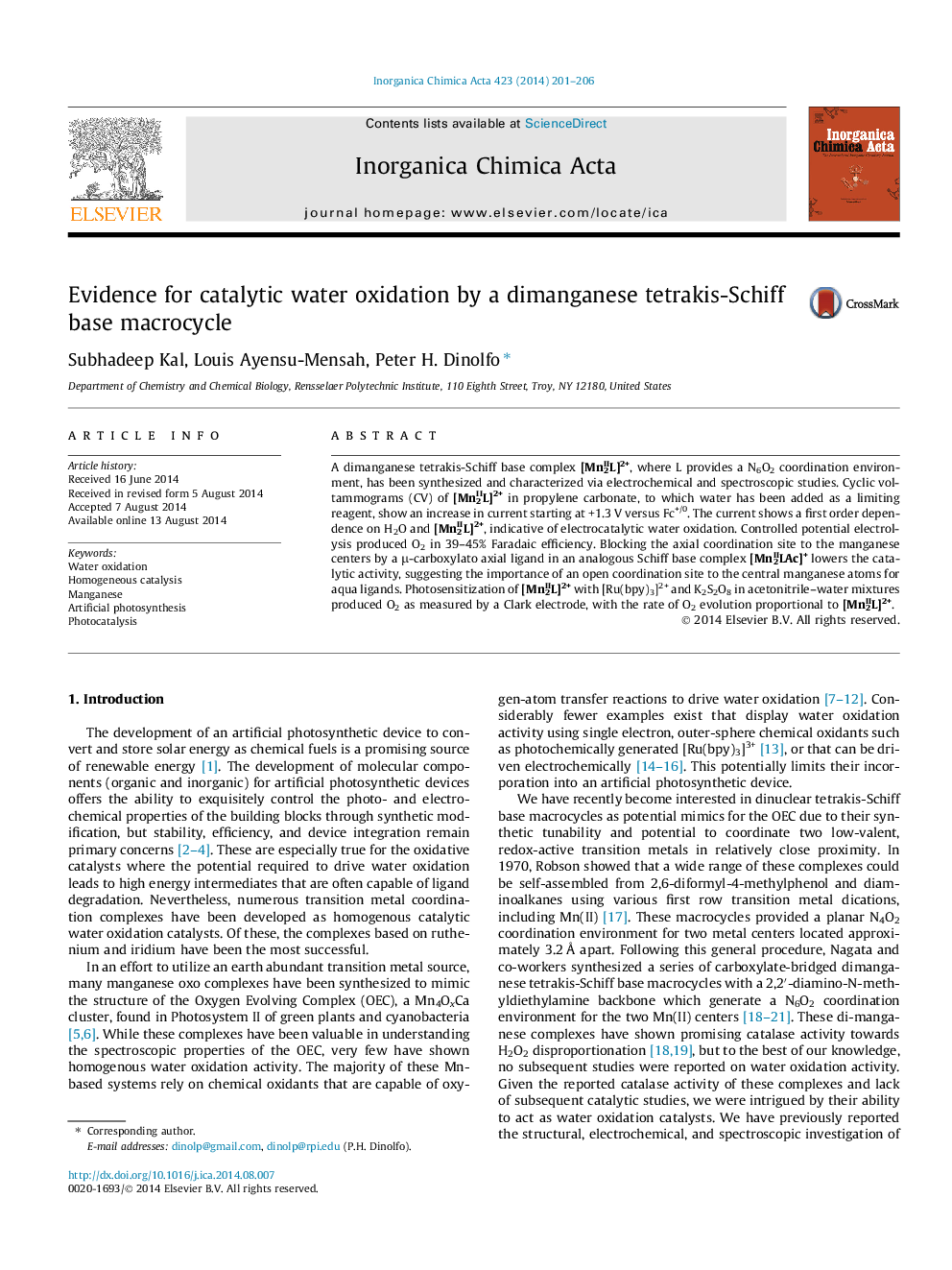| Article ID | Journal | Published Year | Pages | File Type |
|---|---|---|---|---|
| 1309458 | Inorganica Chimica Acta | 2014 | 6 Pages |
•Electrochemistry of a dimanganese tetrakis-Schiff base complex is described.•Electrocatalytic water oxidation is observed with the complex in propylene carbonate.•The complex also oxidized water using photochemically generated [Ru(bpy)3]3+.
A dimanganese tetrakis-Schiff base complex [MnII2L]2+, where L provides a N6O2 coordination environment, has been synthesized and characterized via electrochemical and spectroscopic studies. Cyclic voltammograms (CV) of [MnII2L]2+ in propylene carbonate, to which water has been added as a limiting reagent, show an increase in current starting at +1.3 V versus Fc+/0. The current shows a first order dependence on H2O and [MnII2L]2+, indicative of electrocatalytic water oxidation. Controlled potential electrolysis produced O2 in 39–45% Faradaic efficiency. Blocking the axial coordination site to the manganese centers by a μ-carboxylato axial ligand in an analogous Schiff base complex [MnII2LAc]+ lowers the catalytic activity, suggesting the importance of an open coordination site to the central manganese atoms for aqua ligands. Photosensitization of [MnII2L]2+ with [Ru(bpy)3]2+ and K2S2O8 in acetonitrile–water mixtures produced O2 as measured by a Clark electrode, with the rate of O2 evolution proportional to [MnII2L]2+.
Graphical abstractA new class of bio-inspired dimanganese complexes, based on tetrakis-Schiff base macrocycles, have been shown to catalyze water oxidation to molecular oxygen. These catalysts provide a rare example of Mn-based coordination complex that can be driven electrochemically and with non-oxo atom transfer chemical oxidants.Figure optionsDownload full-size imageDownload as PowerPoint slide
